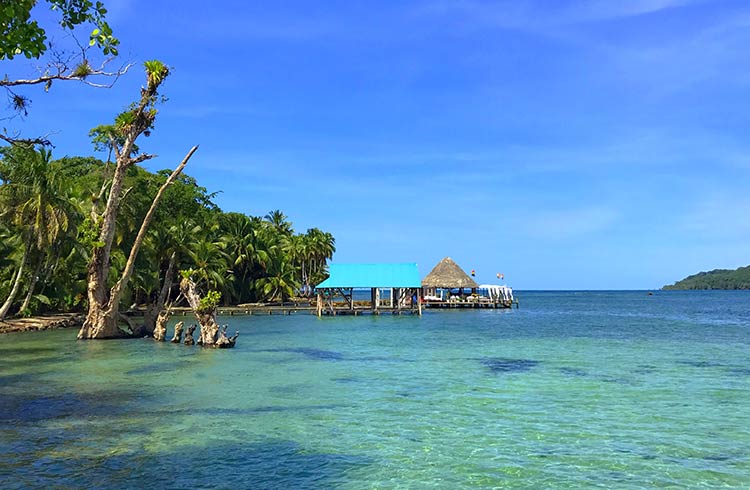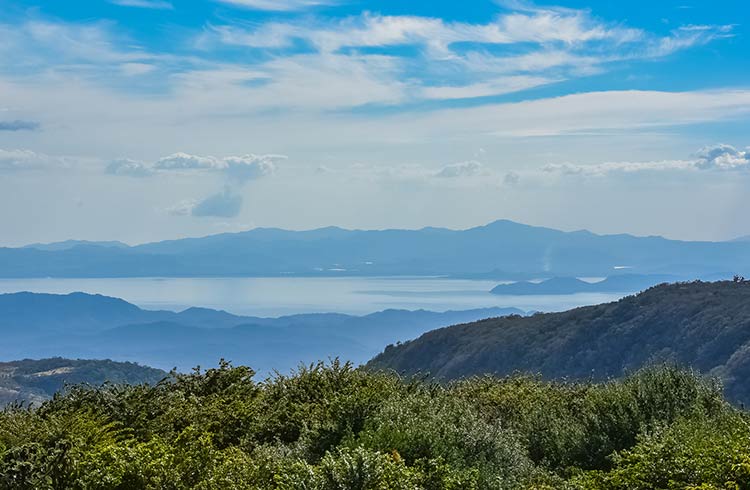Travelling with Turtles in Panama
Panama is a jewel waiting to be discovered. With more than 1,500 miles of coast on both the Pacific and Atlantic oceans, it's not surprising its turtle population loves it too.
 Photo © Rosie Bell
Photo © Rosie Bell
Explore the archipelagos
Once you’re ready to leave Panama City behind, head further afield to one of Panama’s many spellbinding archipelagos. Panama is warm 365 days a year and has just two seasons: the rainy season from May to
Speaking of 365, island-hop between 365 pristine islands of perfection and simultaneously connect with an indigenous tribe at the San Blas Islands. The region (also referred to as Guna Yala) is inhabited by the Kuna Indians who control all tourism. The archipelago has around 100 nameless islands and islets to get splendidly lost off the beaten track.
Watch the sunrise and set in Boquete
For a unique experience, see the sunrise on the Pacific and set on the Atlantic. This magical feat is possible only in one place in the world: the dormant Barú volcano in Boquete, western Panama.
Geisha Coffee, the “Champagne of coffees”, is grown on the mountains of Boquete and will put quite a dent in your wallet. It is, however, a must-try in Panama.
While in Boquete, secure the services of a tour guide to accompany you on the Quetzal trail in order to spot this famed and rare bird of Mesoamerican cultures.

Bocas del Toro
Paradise beaches, nature expeditions
In Bocas, there is an island to suit every craving. Isla Colon is where the bulk of the action happens: restaurants, bars, surf
Isla Carenero conversely suits those in search of a little peace and quiet. The Zapatilla islands are the pristine untouched gems you will dream about once you return home. Isla Bastimentos, the largest of the nine islands, attracts those longing for postcard beach views with a bit of rough jungle in the background.
Bastimentos is home to Eco Lodges including Palmar Beach Lodge, and the more upscale Casa Cayuco and Azul Paradise. There are three bat caves on the island: Nivida, Bat’s Mouth and La Gruta. Wade through waters 4-5 feet deep to discover the various vampire species that call these caves home. It’s far more enjoyable than it sounds.
Tours between the different islands often include snorkeling stops at Coral Cay (Cayo Coral) or Dolphin Bay for the chance to see schools of dolphins getting along swimmingly. October is Bocas’ slowest month just before the high season kicks off in November, so be sure to plan your trip accordingly.
Bocas is my favorite part of Panama, and the country’s number one beach destination for a reason. I’d never heard of Bocas before a friend coerced me to book a flight there on a whim. The element of surprise when I stumbled upon this unknown nirvana honeyed the experience considerably. I have since returned to Bocas on eight occasions. The novelty never fades.

Wildlife encounters
Panama is a hotbed of biodiversity. Only here can you meet the pygmy three-toed sloths that live on Isla Escudo de Veraguas. There are said to be only 79 in existence.
Explore your boundaries by scuba diving and whale watching on the Pacific Coast at Isla de Coiba or at the Gulf of Chiriqui between July and October when Humpback Whales migrate here to give birth and build fat depositories prior to the winter. The area is also home to Hammerhead sharks.
The Sea Turtle Conservancy (STC) has been working at several locations in the Bocas del Toro Province of Panama since 2003 to monitor and protect endangered sea turtle nesting populations. The region sees globally important levels of nesting by critically endangered hawksbill turtles and leatherback turtles. However, intense hunting pressure dating back over a hundred years nearly wiped out these nesting colonies.
STC’s work in the region, conducted in partnership with a local indigenous community, has reversed the decline and they have seen an increase in nesting by both species. At the same time, communities in the region are gradually moving away from the unsustainable harvesting of turtles and replacing it with sustainable ecotourism.
Nesting activity is concentrated at several relatively undeveloped beaches spread around the archipelago of Bocas del Toro. Over the last 18 years, STC gradually established conservation programs at each of the known major nesting sites in the province.
Simple and flexible travel insurance
You can buy at home or while traveling, and claim online from anywhere in the world. With 150+ adventure activities covered and 24/7 emergency assistance.
Get a quote
No Comments